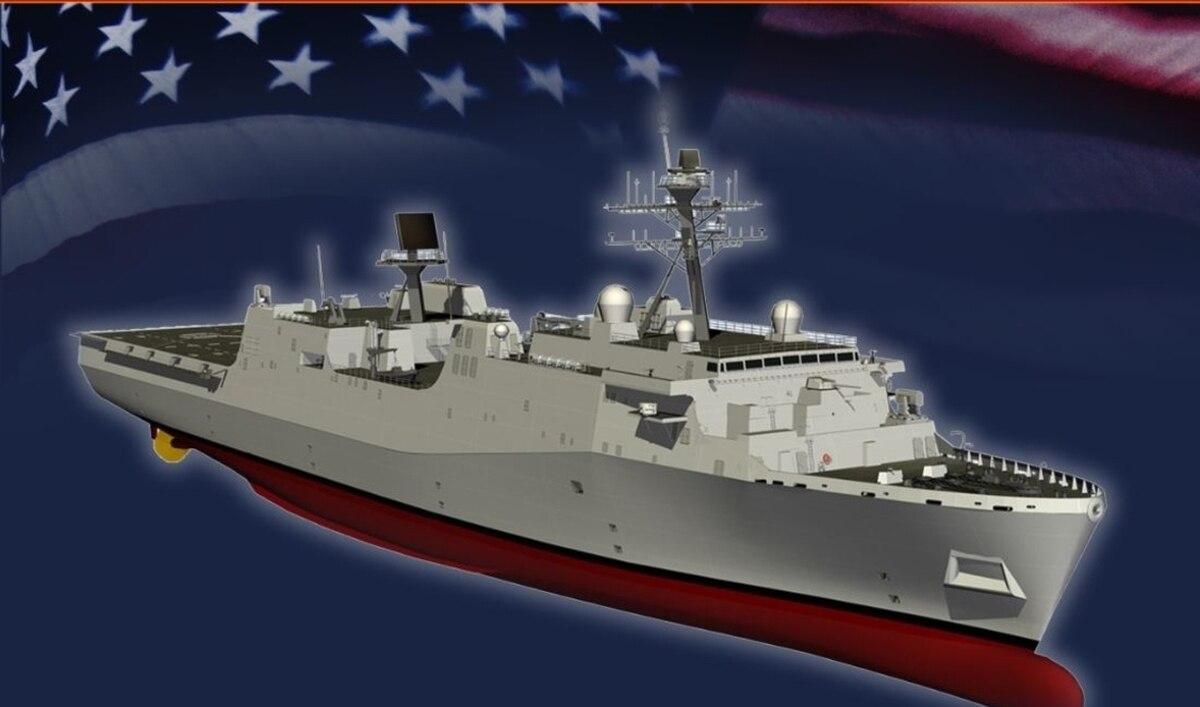
“The people of central Pennsylvania have always played a critical role in forging the strength of our Navy and fighting to defend our nation,” said Secretary of the Navy Richard V. Spencer in a prepared statement released to Navy Times. “The future USS Harrisburg will carry on this legacy to every part of the world.”
Harrisburg will be built at Huntington Ingalls Industries’ yard in Pascagoula, Mississippi, with metal fabrication for the warship slated to begin in 2020.
On March 26, the company announced it had been awarded a $1.47 billion, fixed-price incentive contract from the Navy for the detail design and construction of LPD 30, the 14th amphib in the San Antonio class of warships and the first Flight II variant.
Designed to replace aging Whidbey Island-class vessels, the Navy wants to buy 13 of these LPD-17 Flight II amphibious ships.
They’re expected to cost less to procure than the initial fleet of Flight I LPDs, but also are in some ways less capable, according to a Congressional Research Service report released on Sept. 17.
Some of the biggest changes include replacing the composite mast with a steel stick and installing the new Enterprise Air Surveillance Radar, which the Government Accountability Office said in a May update is still in development.
Navy officials expect to have a completed radar prototype by early 2020.
Harrisburg will run 684 feet in length, with a beam length of 105 feet, and displace 24,900 long tons when fully loaded. Sailing in excess of 22 knots, it will carry a ship’s company of 386 personnel with an embarked landing force of 631 Marines and sailors, according to the Navy.
Like earlier San Antonio-class amphibs, Harrisburg will be able to launch MV-22 Osprey tilt-rotor aircraft, CH-53E Super Stallion heavy-lift helicopters, AH-1Z Viper attack helicopters, UH-1Y Venom utility helicopters and various versions of the MH-60 Seahawk helicopter, plus landing and attack craft such as the Amphibious Assault Vehicle.
LPD-30 becomes the second Navy vessel named after Pennsylvania’s capital city.
The first was a troop transport that began life in 1888 as a steel three-masted transatlantic schooner — called City of Paris — for the Inman Line.
It was reflagged as an American vessel five years later as “Paris” and then dragooned into federal service as an auxiliary cruiser at the outbreak of the Spanish-American War in 1898, according to U.S. Naval History and Heritage Command.
Recommissioned as “Yale,” the ship seized the Spanish merchantman Rita before being used by the Army to transport troops to Puerto Rico.
It reverted to Paris and resumed civilian duties but then ran aground on The Manacles off the Cornish coast in 1899, requiring an extensive refit in Belfast. After repairs, it became the transatlantic liner Philadelphia.
Reacquired by the Navy for World War I, officials renamed it Harrisburg and used it to bring troops to Europe and back before decommissioning it in 1919.
It was scrapped four years later.